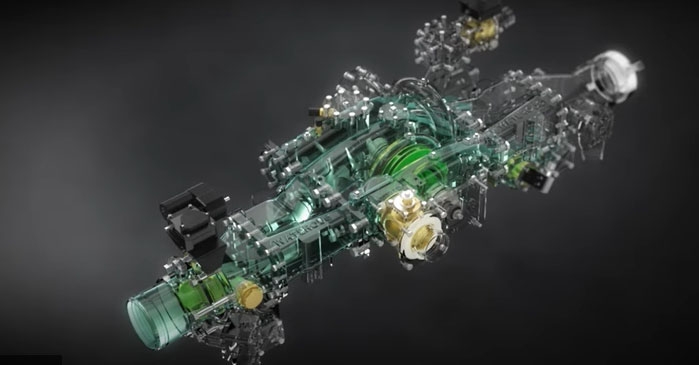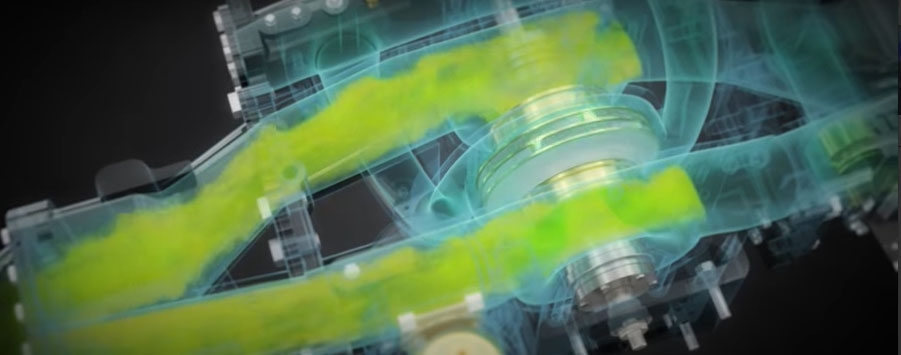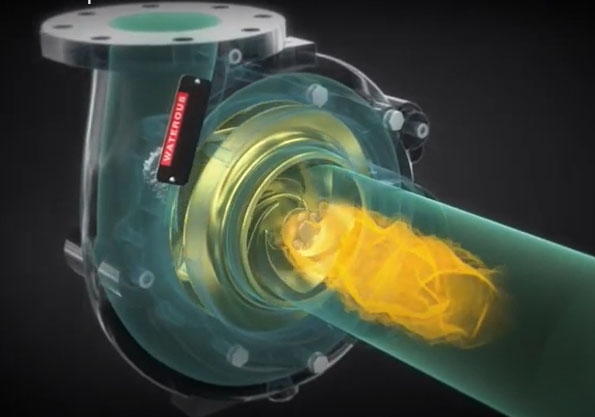End Suction or Full-Bodied Pump Guideline
Do I need an end suction or a full-bodied pump?
This guideline will help you decide
Imagine for a moment, you are on a truck committee, or a sales representative for an OEM and the apparatus you are tasked with purchasing requires a pump rated at 1500 GPM. Your potential customer asks for solutions to save some space and weight on a proposed apparatus but keep the pump performance at 1500 GPM.
The OEM suggests an end suction pump, which seems to meet the flow and pressure requirements you set forth, as well as saving some space and weight. You could also see a smaller pump house, as well as a more compact pump control panel. This could mean a shorter wheelbase. Seems like an easy choice.
Before you select this option, let’s look at the differences and similarities between an end suction pump and a full bodied pump.
PUMP DESIGNATIONS
CS Series is a full-bodied, single stage pump with ratings up to 1250 GPM. Adding the U designation to the CS, the CSU Series is rated up to 2250 GPM. Both CS and CSU Series have dual-eye impellers.
CXV Series is a single-stage, end suction pump with ratings available at 750, 1000, 1250 GPM and in special circumstances can be rated at 1500 GPM. Adding a Waterous ram horn S-Intake creates a CXS Series capable of 1500 GPM. Both CXV and CXS Series have single-eye impellers.
S100 is a single-stage, end suction pump with ratings up to 2000 GPM. S100 Series have single-eye impellers.
NOTE: The eye or center of the impeller is where the water enters the impeller.
Waterous pumps are available in different ratings. For this instance, we will choose the 1500 GPM version of each pump: CSU Series full bodied dual-eye impeller, CXS and S100 Series end suction single eye impeller.
SIMILARITIES ON ALL WATEROUS PUMPS
- Made in the USA
- 7-year warranty
- Can be midship or rear mounted
- Can be split shaft (C20 pump transmission) or PTO driven (*GPM ratings for PTO driven applications vary, please consult before determining a PTO rating)
- Similar pump operation (controls, drafting, priming, engage & disengage)
- All are rated at 1500 GPM @ 150 psi
- All have bronze impellers
- All are capable of an integrated Compressed Air Foam System
- Available to all OEM’s
DIFFERENCES
CSU Water Flow (Full body, dual-eye impeller)
With the CSU, water enters the pump through intake manifolding and the inbound water stream is split. Half of the water flows to the impeller eye at the front of the impeller, the other half flows to the impeller eye at the rear. The water is pressurized by the rotation of the impeller.
With the end suction pumps, water from the intake flows directly into the single eye of the impeller. The water is pressurized by the rotation of the impeller.
Figure 1. CSU Water Flow

Figure 2. CSU Water Flow into Dual-Eye Impeller

CXS and S100 Water Flow (End suction, single-eye impeller)
As discussed earlier, the CSU has a dual-eye impeller, while the end suction pumps (CXS & S100) have a single-eye impeller. The difference can affect drafting capability. Dual-eye impellers can vacate air in the pump body quicker, allowing a quicker vacuum and draft. While end suction pumps are capable of drafting, depending on local conditions and elevations, it may take a little longer.
Figure 3. CXV Water Flow through Single-eye Impeller

Pump Body
CSU has a larger and heavier pump body weighing 587 pounds. The S100 weighs 280 pounds while CXS weighs 228 pounds. Additionally, the common weight of the C20 transmission needs to be added to each pump body. The C20 weighs 152 pounds.
The physical size is also bigger on the CSU, the actual footprint would be determined by the manifolding and other features that are added to each pump.
CSU and CXS pump bodies are cast iron and available in bronze. The S100 is made of ductile iron.
With the smaller pump body and physical size on the CXS & S100, the pump interior or volute is also smaller. This means less water is in the pump to absorb heat when operating at a low flow. The impeller is designed to flow 1500 GPM of water and when operating at a low flow, it can cause re-circulation cavitation or an overheat condition if the water is not adequately re-circulated. On the higher flow S100, there is an inducer at the impeller to promote better water flow. To help prevent heat issues, operators can circulate water and in the spec process, include an optional pump overheat protection manager (OPM) with alarm.
Sealing – Packing or Mechanical Seal
CSU is available with either mechanical seals or packing. On CXS and S100 end suction pumps, mechanical seals are the only choice.
Additional things that need to be taken into consideration:
- One advantage of an end suction pump is that the design has one mechanical seal which can make it easier for future maintenance. In some cases, OEM’s fabricate an end suction pump into their application so that future maintenance may not require removal of the transmission.
- Both end suction pumps and dual-eye impeller pumps meet the NFPA requirement of a 10’ lift at 2,000’ elevation, however when considering the addition of items to the suction inlets, like butterfly valves etc.…be sure to discuss with your OEM’s engineering team for capabilities.
- In some cases, the addition of a butterfly valve on an end suction pump may limit an applications capability.
- When elevation may be a factor (drafting) be sure to inquire about the elevation lift capability of the pump. As we increase in elevation there is less atmospheric pressure bearing down on the water source which can have an effect over the pumps draft capabilities. Waterous has published materials for reference on this subject which shows the elevation capabilities of our end suction and dual eye impellers along with number and length of hoses.
- Feel free to contact Waterous for further details.
By having all the information available on the capabilities and limits of each pump, you will be confident that you made the correct choice.
Bear in mind, that in some chassis or apparatus configurations, you may be limited to the pumps physical size by other factors and available power to run the pump.